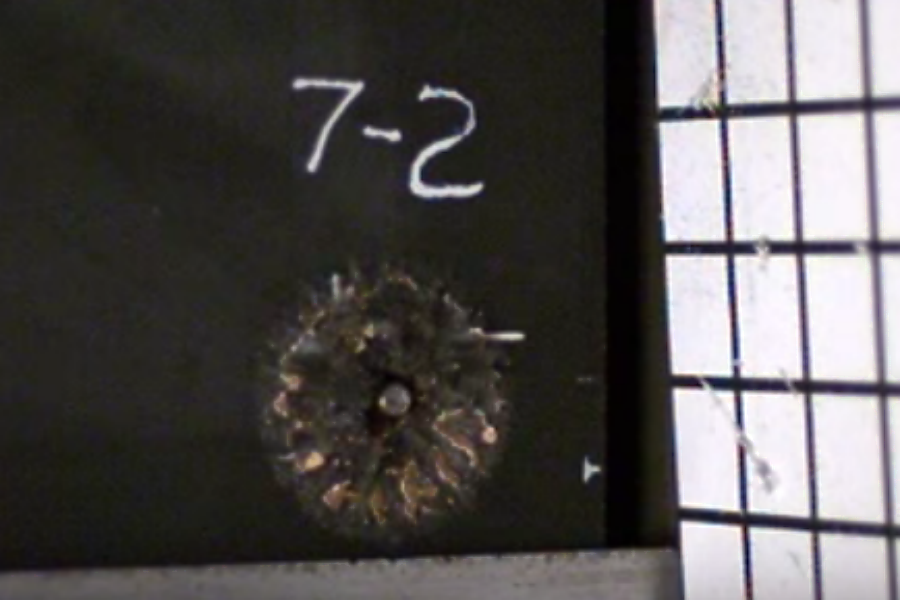Scientists create metallic foam that shatters bullets
Loading...
Engineers are developing new materials with the potential to offer unprecedented protection from bullets and crashes.
Take a new composite metal foam, that absorbs most of the kinetic energy of bullets or other projectiles.
Researchers with North Carolina State and the US Army Research, Development and Engineering Center have combined multiple bullet-stopping materials into a single piece of armor. With a thickness of just 25 millimeters, the armor consists of "ceramics as the strike face, composite metal foam processed by powder metallurgy technique as a bullet kinetic energy absorber interlayer, and aluminum 7075 or Kevlar™ panels as backplates," according to the 2015 study.
The new armor can stop a bullet with a little less than an inch of foam, Afsaneh Rabiei, a professor of mechanical and aerospace engineering at North Carolina State, said in a press statement. The indentation made by a bullet (sized according to standards from the National Institute of Justice) is just 8 millimeters, although the standard allows for an indentation of up to 44 millimeters.
It tests, the bullet disintegrates upon impact.
Kevlar is the best-known brand for bulletproof vests and is top-rated on the National Institute of Justice (NIJ) standard for its bullet-stopping capability. Dyneema is another bullet-proof polymer, also used in surgical hip replacements. It stops bullets because of its ultra-high molecular weight, meaning it has very long strands of molecules that essentially entangle the bullet as it enters.
Both Kevlar and Dyneema conform to the NIJ 44-millimeter-standard.
Police who need bullet-stopping armor have used ceramic plates for years, but a front plate alone weighs nearly 8 pounds, according to Police Magazine. They are also single-use, as one small bullet can leave a 3-inch hole in the plate. Polyethylene is a lighter substance, but its fibers absorb bullets by melting as they enter.
The metallic foam, however, has the potential to resist heat and breakage. A video from an experiment with the foam from North Carolina State, for example, shows a bullet in slow-motion dissolving into dust upon impact with the foam.
The armor's bullet-stopping capabilities are impressive, but the researchers working on these composite metal foams do not want them relegated to defense only. They insist the materials show potential in the areas of nuclear waste storage and protecting satellites from space debris.
Some have suggested the foam could replace the armor plating on cars, airplanes, or even space shuttles to reduce the damage from crashes. In 2003, NASA's Columbia Shuttle crashed upon re-entry, killing all seven of the astronauts inside, because of a damaged ceramic heat shield. This new metal foam may have the potential to prevent such damage.
Other new bullet-stopping materials involve combining substances in new ways. Researchers from Rice University and MIT designed a structured polymer composite, according to a Rice University statement. This nano-material seals itself after bullets penetrate, so it remains clear and undamaged after stopping the bullet. Researchers suggested it "would be a great ballistic windshield."
"We want to find out why this polyurethane works the way it does," said Ned Thomas, dean of the George R. Brown School of Engineering at Rice and a materials scientist, in a press statement. "Theoretically, no one understood why this particular kind of material – which has nanoscale features of glassy and rubbery domains – would be so good at dissipating energy.”








